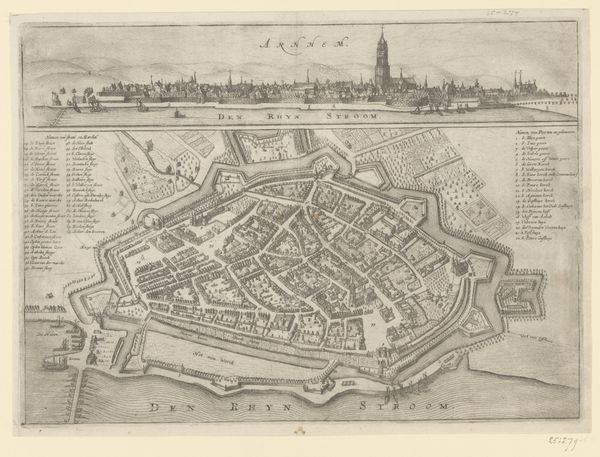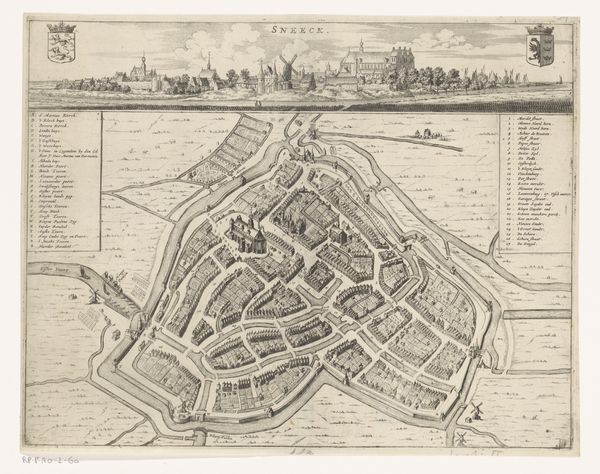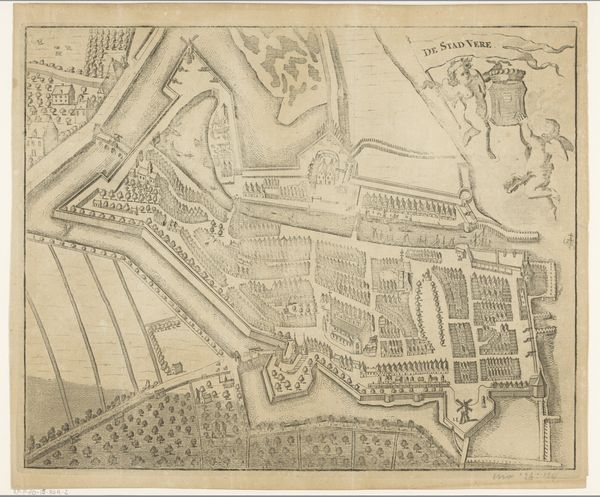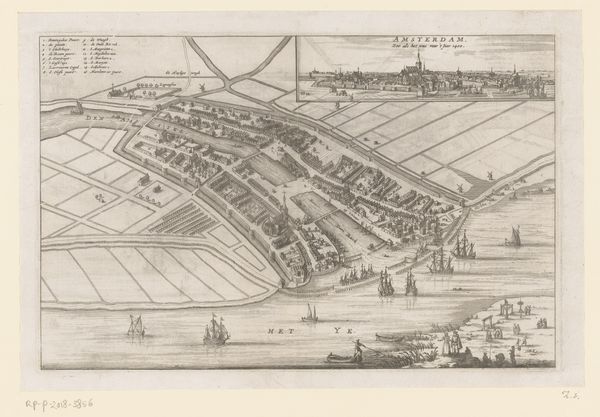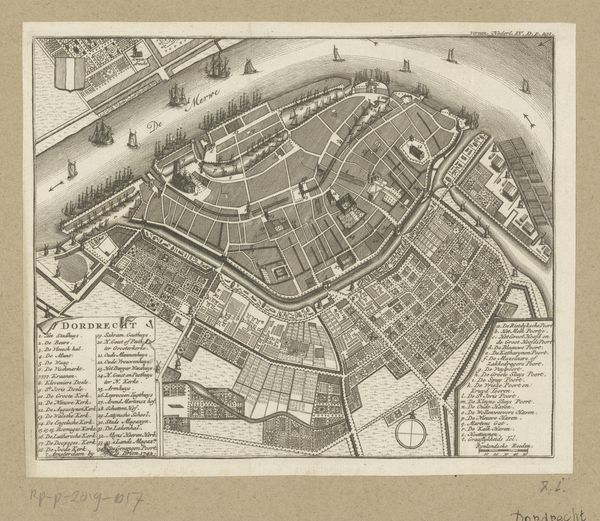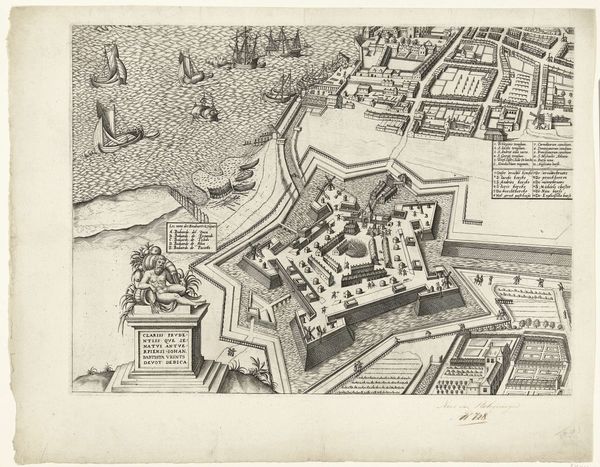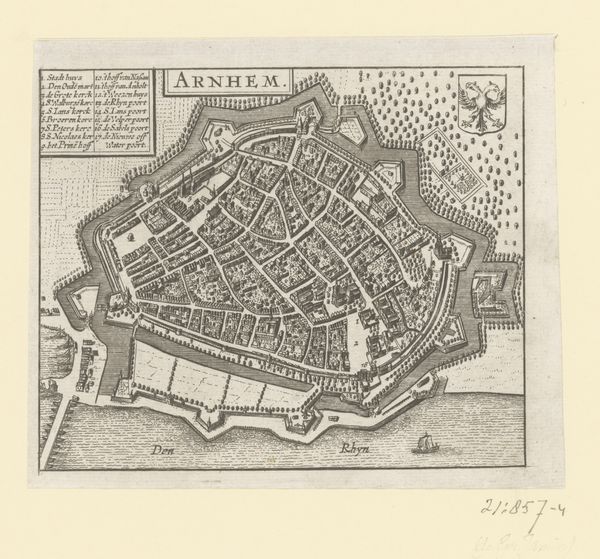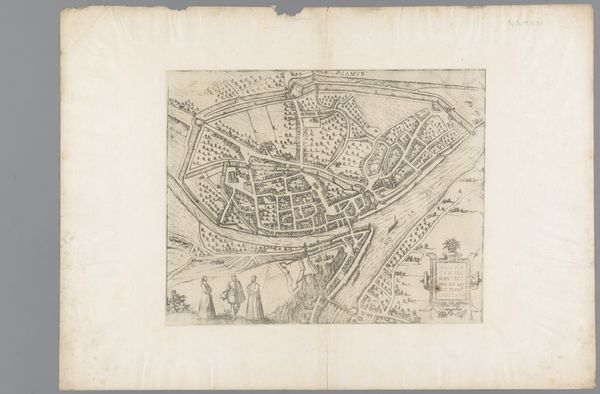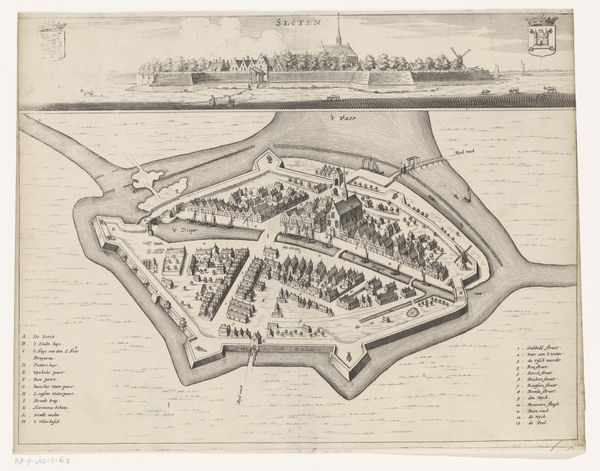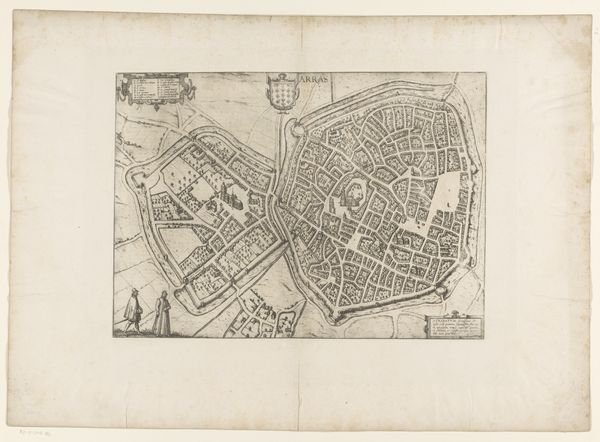
print, etching, architecture
#
dutch-golden-age
# print
#
etching
#
landscape
#
etching
#
architectural drawing
#
cityscape
#
architecture
Dimensions: height 250 mm, width 348 mm
Copyright: Rijks Museum: Open Domain
Editor: This is a fascinating print from the Dutch Golden Age titled "Plattegrond van en gezicht op Harderwijk," created by Nicolaes van Geelkercken sometime between 1653 and 1672. It's an etching showing both a plan and a profile view of the city. I'm immediately struck by the contrast between the bird's-eye view of the city layout and the almost dreamlike depiction of the skyline above. How do you interpret this dual perspective? Curator: The dual perspective you mention isn't simply about visual representation; it speaks to the Dutch Golden Age's complex relationship with urban space. The precise city plan below provides a sense of control, order, and burgeoning civic pride. Consider what symbols are emphasized - walls, church towers, administrative structures, hinting at societal priorities and perhaps anxieties about defense and divine authority. The profile view functions as a cultural memory, situating the city within its broader landscape, connecting to trade and the sea, reflecting both the concrete and aspirational. How does the symbolic interplay of the cityscape and plan make you feel? Editor: I feel a sense of both being grounded in the physical space and lifted above it, to see the bigger picture. So, are you saying this wasn't just a map, but also a statement about Harderwijk’s identity? Curator: Precisely! Consider the absence of figures; the city almost exists outside time, as an ideal. The meticulous details serve almost as an attempt to preserve an image of a fleeting moment. Look at the bodies of water -- how they mirror the forms above them and lead the eyes across the plane. Now, thinking about symbolism and context, how would you describe the work’s contemporary significance? Editor: I think that seeing a city so deliberately and artistically rendered reminds us of the importance of place and the stories embedded within our surroundings. This conversation made me see it as less a straightforward document and more of a symbolic portrait of a place and time. Curator: Agreed. We often look at these kinds of prints simply for historical information, forgetting how powerful they were and continue to be as coded visual narratives, resonating with both concrete detail and a broader vision.
Comments
No comments
Be the first to comment and join the conversation on the ultimate creative platform.
